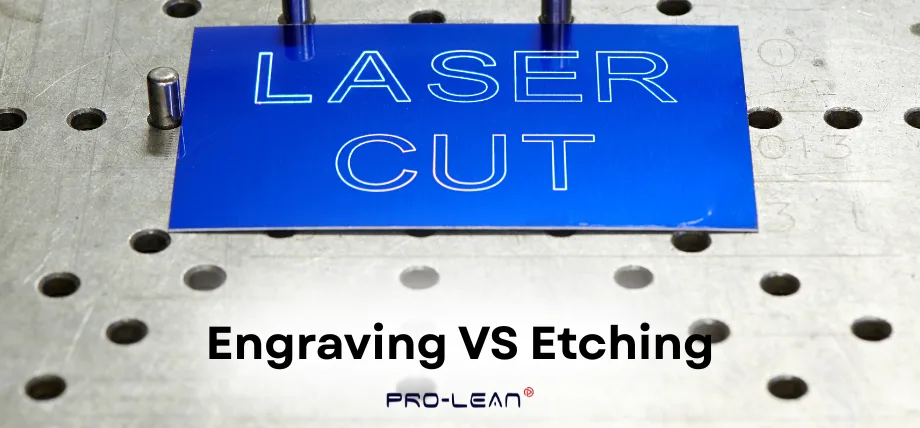
Engraved VS Etching
Engraving and etching are popular manufacturing processes. Almost all types of industries find uses in marking and decorating metal pieces, from manufacturing parts to jewelry.
Engraving and etching might seem similar processes, but they have different approaches. Grasping the differences between them enables you to select the appropriate technique for your project.
In this article, you’ll learn the major differences between engraving and etching, emphasizing laser and chemical etching and their applications.
What is the Difference Between Engraving and Etching?
Engraving and etching are similar processes, but their process and results differ. Engraving is a physical process whose principle is cutting lines into hard surfaces of the material by the use of sharp tools or a laser beam. Engraving physically cuts deep and removes more material than etching.
Etching is a chemical process that changes the surface of the material. This involves the corrosion of the top layer of a material’s surface, etching finer, shallower lines into a surface.
Engraving and etching have been used for various applications over the years, engraving being used to stamp or carve using tools for purposes such as print marking, and etching being used to etch complex patterns on metal. But both serve the same process of marking
Try Prolean Now!
Understanding the Engraving Process
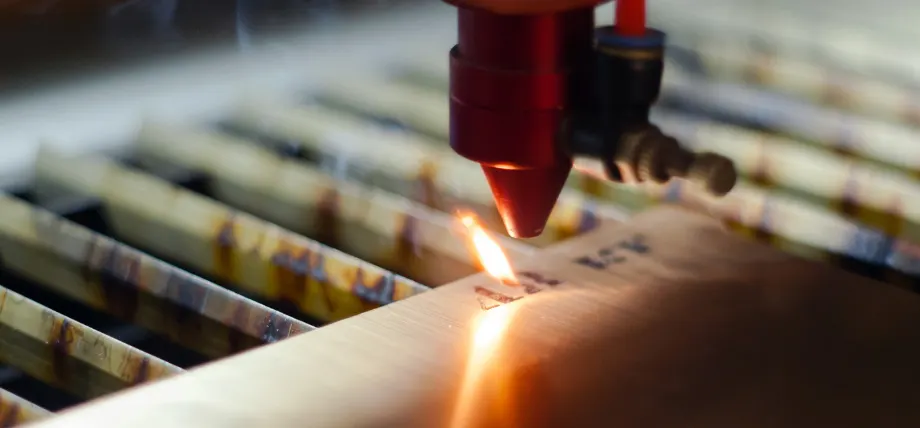
Laser engraving on wood
Physically removing material from the material’s surface to create a design is the main part of the engraving process. Traditionally, engraving is done using hand tools, but modern laser engravers vaporise material using a high-powered laser beam, resulting in precise and accurate marks.
Laser engraving is ideal for serial numbers and QR codes. Barcode and such identifying and tracking systems require durability and must withstand wear and tear; the deep engraving depth ensures this.
Processes such as laser annealing differ from engraving because laser annealing changes the material structure or color, but engraving physically removes materials.
What is Etching?
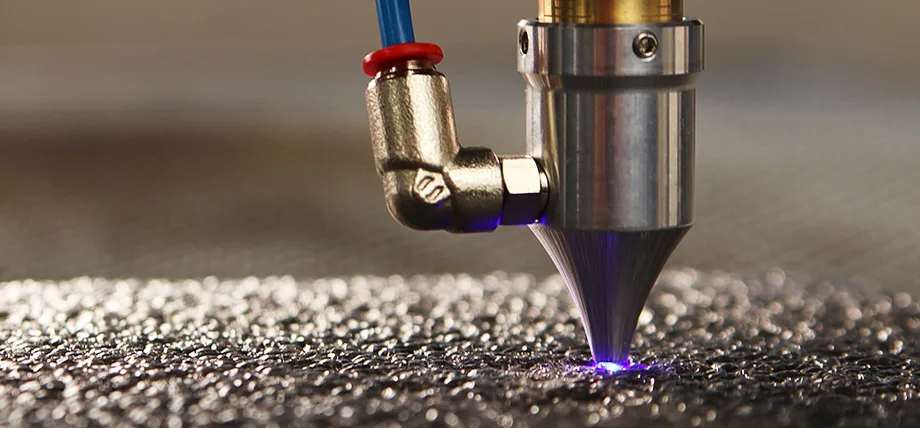
Laser etching
Etching is a chemical process that removes the exposed top layer of a material’s surface, resulting in patterns and designs. Traditionally, acid is used to etch exposed metal.
In laser etching, a laser engraving machine uses heat to change or remove a thin layer of material from the surface of the metal.
Laser etched patterns and designs are finer but less deep when compared to laser-engraved ones, which makes etching a viable option for things such as surface texturing and intricate patterns, on jewelry or decorative metal pieces.
A major difference between etching and engraving is that etching does not cut deeply, but rather changes the material’s surface, preserving its durability.
Main Differences Between Engraving and Etching
The differentiating factor between laser etching and laser engraving is that laser etching is limited to the top layer of a surface, whereas laser engraving has a deeper penetration, removing material, resulting in long-lasting marks.
Laser etching is more efficient than laser engraving, but at the cost of durability. Laser etching produces shallow marks on the surface, while engraving results in deeper cuts that physically remove material.
Metal laser engraving is a common choice for marking serial numbers on stainless steel, where durability is essential, and etching is ideal for jewelry, where durability isn’t a concern.
The difference between annealing and these processes is that laser annealing heats up the metal’s surface without removing material, which is drastically different from engraving or etching, which alter the surface by removing material physically or chemically.
How Does the Laser Engraving Process Work?
Components of a Laser Engraver
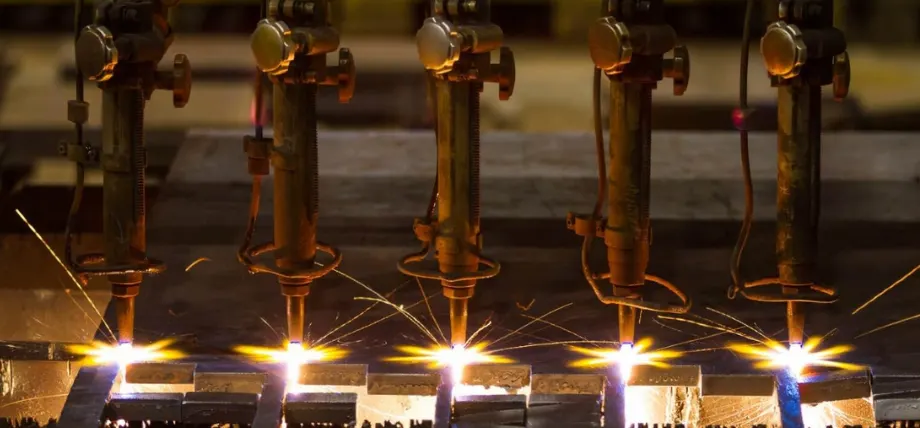
Laser cutters
The major components of a laser engraver are a laser machine, a control system, and a worktable. The type of laser depends on the material you want to engrave, but generally it is a diode or a fibre laser.
The laser engraver produces a high-heat laser beam with an extremely high temperature that vaporizes or melts the material to create a design.
Steps in the Laser Engraving Process
The laser engraving process creates durable marks resistant to corrosion. Designing is the initial step of the laser engraving process, which involves using software to design a pattern or logo, followed by setting parameters such as power and speed. The laser beam then engraves the design by removing material from the metal’s surface, depending on the engraving depth.
Materials Suitable for Laser Engraving
There is a wide range of materials that can be engraved using a laser engraver, due to its engraving depth and durability, materials ranging from metal surfaces like stainless steel and titanium to glass, plastic, wood, and many more can easily be engraved.
What is Laser Etching and How is it Different from Engraving?
Laser etching is a non-contact etching process that involves heating the top layer of a material’s surface, changing its colour, resulting in high contrast marks.
Laser Etching vs. Laser Engraving: Key Differences
A discerning factor in laser etching vs laser engraving is depth and efficiency. While laser engravings are more durable, they require a lot more time to cut deeper than laser etching, which is quick and affects only the surface of the material, making it suitable for QR codes and designs.
Applications of Laser Etching
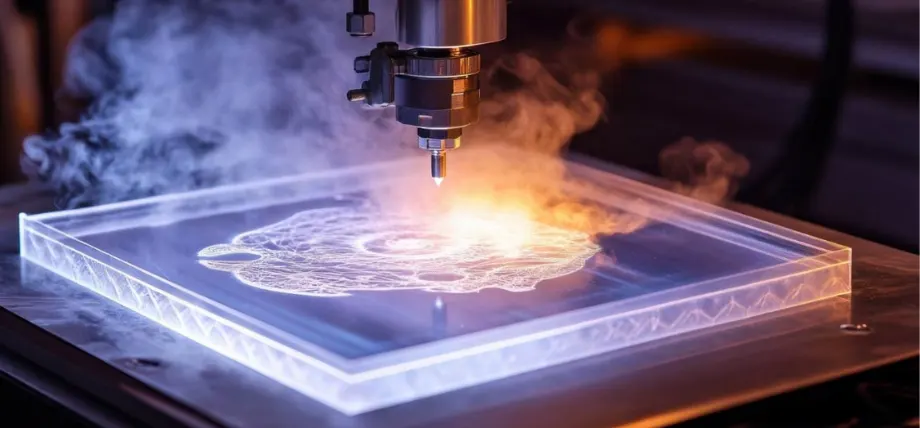
Laser etching on acrylic
- Industrial markings: Laser etching can produce high contrast marks on a variety of materials from metals to plastics. These are useful in industrial parts for serial numbers, barcodes and company logos.
- Electronics: In the electronics industry, laser etching can produce patterns on circuit boards, microchips for marking components to identify later.
- Medical devices: On surgical tools and implants as identifiers.
- Packaging: Commonly used on packaging from cardboard to metals to etch dates, logos, barcodes for branding and tracking.
What are the Benefits of Using a Laser for Engraving and Etching?
Precision and Detail in Laser Marking
Engraving and etching are both varieties of laser marking, which offer high precision and enable marking lines into hard surfaces, which is essential for marking barcodes and serial numbers.
Speed and Efficiency of Laser Processes
Laser processes, such as engraving and etching, are far more cost-effective and efficient than their traditional counterparts. Etching is extremely efficient due to its shallow marking depth, which results in increased production in industries.
Versatility of Laser Technology
Lasers are extremely versatile and are used in many applications and industries, from laser cutting, the automotive industry, to mark serial numbers, to the manufacturing industry to etch or engrave designs on consumer goods. This is mainly due to their ability to work with a variety of materials.
What Materials Can Be Engraved or Etched with a Laser?
Common Materials for Laser Engraving
Laser engraving works on a wide range of materials, ranging from metals such as stainless steel, aluminium, and titanium to non-metals such as wood, plastic, and glass. Its versatility, efficiency, and durability have made it mainstream.
Metal Surfaces: Stainless Steel and Beyond
Stainless steel and aluminum are the most common laser-engraving metal surfaces engraved or etched due to their durability, common use as decorations, and use across major industries.
Non-Metal Materials Suitable for Laser Etching
Non-metals like glass, leather, or plastic are suited for laser etching, where shallow, high-contrast marks enhance aesthetics.
Is Chemical Etching a Viable Alternative to Laser Processes?
Understanding Chemical Etching
Chemical etching involves using acids and corrosive agents to mark or etch exposed metal, which allows for precise and complex designs, but is dangerous due to hazardous chemicals being used.
Chemical Etching vs. Laser Etching: Pros and Cons
Environmental impact and efficiency are the main differences between chemical etching and laser etching, with laser etching being more efficient, sustainable, and cleaner than chemical etching. Chemical etching is only preferred in niche metal types or large-scale production.n
When to Choose Chemical Etching Over Laser
Delicate material, large-scale production, unique chemical interactions, and complex design are the only cases where chemical etching is more viable than laser etching
Try Prolean Now!
Laser Engraving and Etching at ProleanTech
Discover more about laser engraving and etching, along with other marking services. Reach out to us today for a free quote and custom-tailored production plan for your project.
Common Laser Etching and Engraving Questions
-
Is etched the same as engraved?
Laser etching removes material from the surface in a thin layer while engraving carves into the material.
-
What is the difference between etching and engraving process?
The main difference between etching and engraving process is the depth. Etching is shallow, while engraving involves physically cutting deeper into the material, creating prominent markings.
-
How can you tell etching from engraving?
Etching does not reach deep below the surface and in plastics can be identified with a slight frosting. Engraving produces grooves and cuts visible by their depth.
-
Is glass etched or engraved?
Glass is usually etched with lasers.
-
Can you do annealing & engraving with the same laser machine?
Laser cutters are capable of annealing, engraving, and etching within the same machine. Annealing marks a material by heating, while engraving removes material that requires different laser parameters.
-
Can you explain the difference between an etching and a carving?
Etching is shallow, just below the surface, while carving removes considerable material with physical tools or lasers, producing 3D designs and relief.
-
How does laser annealing differ from engraving?
The main difference is that laser annealing does not remove material, but creates marks. Engraving uses lasers to vaporize metal and remove material from the workpiece.
-
When to Choose Chemical Etching Over Laser?
Chemical etching is used for high volume production because it is more economical and cheaper in large production runs.

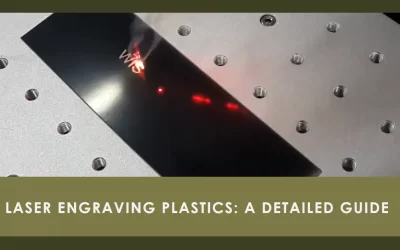
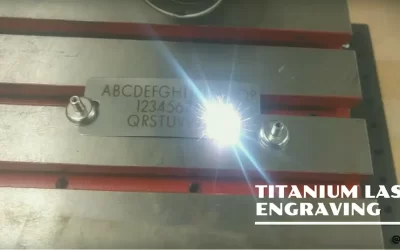

0 Comments